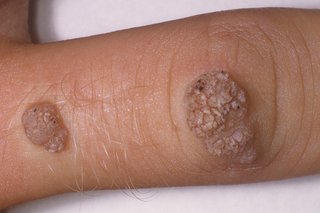Warts are benign (non-cancerous) skin growths caused by the human papillomavirus (HPV). They can appear in various parts of the body, including the hands, feet, face, and genitals. Warts are firm, rough papules or nodules. They appear on the surface of the skin like the eminences of little hills.
They are small, hard non – non-cancerous growths with rough textures that can appear anywhere on the body#. Adults get fever warts than kids and teens because their immune system has built up a defense against the many types of viruses.
Warts Disease Causes:
- Warts are greatly contagious and can be spread by direct skin contact.
- Like when you pick your warts and then touch another part of the body
- Towels or razors in contact with warts on your body.
- They are mostly characterized by small black dots like seeds, which are tiny blood clots.
- Warts are caused by different strains of HPV.
- The virus induces rapid growth of cells on the outer layer of the skin.
Symptoms and characterization of Warts Disease:
The appearance and symptoms of warts can vary depending on their type and location:
- Flat Warts usually grow on the surface, arms, or thigh. They have a flat top and can be brownish, pink, or slightly yellow.
- Planter Warts that grow on the sole, the feet, and often time marks, walking uncomfortable
- Periungual Warts that grow under the finger and nails.
- Firm form Warts that grow around the mouth and nose, sometimes under the chin or neck.
- In women, Warts can also develop in, on, or around the genitals leading to cervical cancer, or a partially fatal disease.
Types of Warts Disease:
There are five major types of warts and they include:
- The fingers
- The skin around the nails
- The back of hands and feet
- The toes with a rounded top
- Covered with a rough grainy appearance
Colors Appearance of Warts Disease:
1- Brown 2- Pink/reddish 3- Slightly yellow
Diagnosis of Warts Disease:
- Warts are usually diagnosed based on their appearance.
- Examine the wart visually.
- Scrap the top layer to look for clotted blood vessels
- Perform a biopsy if the diagnosis is uncertain or if the warts are unusual.
Treatment of Wart Disease:
While many warts disappear on their own without treatment, several options are available to spread up the process or to treat persistent or bothersome warts:
Salicylic Acid:
Applied directly to the wart to peel away the infected skin.
Cryotherapy Kits:
Freeze the wart using liquid nitrogen.
Stronger Salicylic Acid Preparation
Immunotherapy Medicine:
That stimulates the immune system to fight the virus.
Crypto therapy:
A healthcare provider applies liquid antigen to freeze the warts.
Electrosurgery and Cutting:
Burning the warts and scraping it off.
Laser Treatment:
Uses an intense beam of light to destroy the warts.
Surgical Remover:
By cutting out the wart.
Using Home Remedies To Remove the Warts?
Duct Tape Occlusion:
Covering the wart with duct tape to suffocate the virus.
Apple Cider Vinegar:
Applying it to the wart to break down the tissue.
Prevention of warts Disease:
- Preventing warts involves minimizing exposure to HPV.
- Avoid direct contact with warts on other people.
- Don’t share personal items like towels or razors.
- Keep feet dry and change socks daily to prevent planter warts.
- Use protective footwear in public showers and locker rooms.
- Consider HPV vaccination to prevent genital warts and associated concerns.


